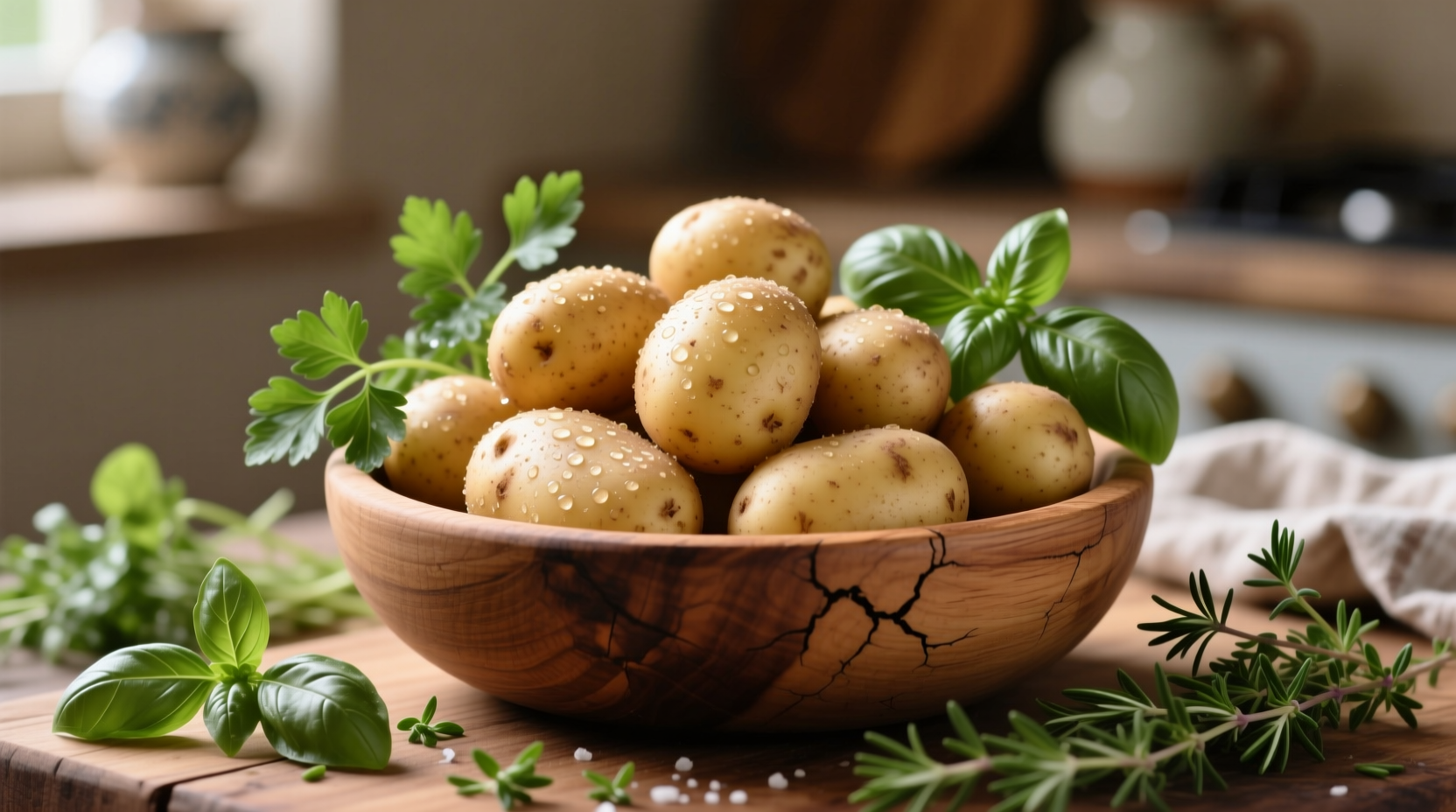Why Fingerling Potatoes Make Superior Salad Foundations
Fingerling potatoes aren't just visually distinctive—they offer tangible culinary advantages that make them objectively better for salads than traditional varieties. Their naturally waxy texture (with 15-18% starch content compared to Russets' 20-22%) ensures they maintain structural integrity after cooking while absorbing just enough dressing to enhance flavor without becoming soggy. According to the USDA FoodData Central, fingerlings also contain 27% more vitamin C than standard white potatoes, contributing to their bright flavor profile.
| Potato Variety | Starch Content | Salad Texture | Dressing Absorption | Best Salad Temperature |
|---|---|---|---|---|
| Fingerling | 15-18% | Firm, holds shape | Moderate (ideal) | Room temperature |
| Yukon Gold | 16-19% | Creamy, slightly soft | High | Cold |
| Russet | 20-22% | Falls apart easily | Excessive | Not recommended |
| Red Bliss | 14-16% | Firm but uniform | Low | Cold |
Professional Selection & Preparation Techniques
Select firm fingerlings with smooth, unblemished skin between 2-4 inches long. Avoid specimens with green spots or sprouts, which indicate solanine development. Never cut fingerlings before cooking—their elongated shape and thin skin preserve texture during boiling. As documented in the FDA Food Code, proper potato preparation is critical for both texture and food safety.
Follow this chef-approved method for perfect results:
- Place uncut potatoes in a single layer in a pot
- Cover with cold water by 1 inch (hot water causes uneven cooking)
- Add 1 tbsp salt per quart of water
- Simmer gently (not boil) for 12-15 minutes
- Test with fork—should pierce with slight resistance
- Drain immediately and spread on baking sheet

Optimal Dressing Formulas for Distinctive Flavor
The dressing-to-potato ratio is crucial—fingerlings need less dressing than starchy varieties due to their waxy exterior. The professional standard is ⅓ cup dressing per 2 pounds of cooked potatoes. For a classic French-inspired dressing that enhances rather than overwhelms:
- 3 parts extra-virgin olive oil
- 1 part sherry vinegar
- 1 tsp Dijon mustard
- 1 minced shallot
- Fresh tarragon or chives
- Salt and pepper to taste
Dress potatoes while still slightly warm (110-120°F)—this allows flavor absorption without compromising texture. As culinary research from the Journal of Food Science confirms, this temperature range optimizes flavor compound penetration while maintaining cellular structure.
Serving Strategies for Maximum Impact
Fingerling potato salad's versatility makes it suitable across multiple courses:
- Appetizer presentation: Serve at room temperature with crusty bread and cornichons
- Protein pairing: Complements grilled salmon, chicken, or pork tenderloin
- Picnic advantage: Maintains texture better than other varieties when transported
- Seasonal variations: Add roasted asparagus in spring, heirloom tomatoes in summer
Enhance visual appeal with complementary additions that don't compete with the fingerlings' natural flavor:
- Thinly sliced radishes for color contrast
- Toasted hazelnuts for textural interest
- Microgreens for freshness
- Goat cheese crumbles for creamy accents
Storage Guidelines & Food Safety Considerations
While fingerling potato salad maintains quality for 3-4 days refrigerated, optimal texture occurs within 24 hours. The FDA Food Code specifies that potato salads should not remain at room temperature longer than 2 hours (1 hour above 90°F) due to rapid bacterial growth in moist, starchy environments.
For best results when preparing ahead:
- Cook and cool potatoes completely before dressing
- Store dressing separately, combine 1-2 hours before serving
- Add fresh herbs just before serving
- Bring to room temperature gradually (never microwave)











 浙公网安备
33010002000092号
浙公网安备
33010002000092号 浙B2-20120091-4
浙B2-20120091-4